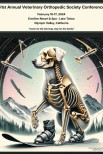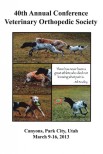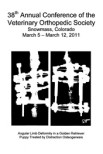Objective: To assess changes in patient positioning prior to acetabular cup impaction during total hip replacement (THR) procedures in dogs.
Methods: In a prospective, analytical study, 26 client-owned dogs were evaluated for changes in patient positioning during THR procedures. Following initial patient positioning in true lateral recumbency, fluoroscopic measurement of changes in positioning was performed for each plane at 2 separate time points: after draping (M1) and immediately prior to cup impaction (M2).
Results: Patient positioning was significantly altered at time point M1 in the transverse plane, with a mean change of 2.8° (range, 0° to 12°); this change in position was most often toward the dorsum, occurring in 16 of 26 cases (62%). Significant shifting was found at time point M2 in the transverse plane, with a mean change of 2.6° (range, 0° to 10.3°); this change, however, did not significantly correlate with a particular direction. Positioning shifts found at M1 and M2 were not consistently in the same direction in either plane. Body condition score had no effect on shifting found at M1 or M2 in either plane.
Conclusions: Perfect patient positioning is not maintained with the use of bean bag positioners. Despite accurate initial positioning and the use of this positioning device, shifting does occur.
Clinical relevance: Unrecognized shifts in pelvic position during THR procedures may occur, which could contribute to inappropriate implant positioning. Pelvic alignment should be evaluated during THR procedures to minimize the risk of complications.









